Abel Tasman

Beez Neez now Chy Whella
Big Bear and Pepe Millard
Thu 5 Dec 2013 23:07
|
Abel Tasman
 Abel Janszoon
Tasman 1603–1659) was a Dutch seafarer, explorer and merchant, best known
for his voyages of 1642 and 1644 in the service of the VOC (Vereenigde
Oost-Indische Compagnie - United East India Company). He was the first known
European explorer to reach the islands of Van Diemen's Land (now Tasmania) and
New Zealand, and to sight the Fiji islands. His navigator François Visscher, and
his merchant Isaack Gilsemans, mapped substantial portions of Australia, New
Zealand and some Pacific Islands.
First Pacific
voyage: Abel Tasman was born in 1603 in Lutjegast in what is now the
province of Groningen, the Netherlands. In 1633, Tasman went to Batavia in
service of the VOC; four years later he was back in Amsterdam. Tasman signed on
for another ten years and took his wife along to Batavia. In 1639 Tasman was
sent as second in command of an exploring expedition in the north Pacific under
Matthijs Quast. His fleet included the ships Engel and Gracht and reached Fort
Zeelandia (Dutch Formosa) and Deshima.
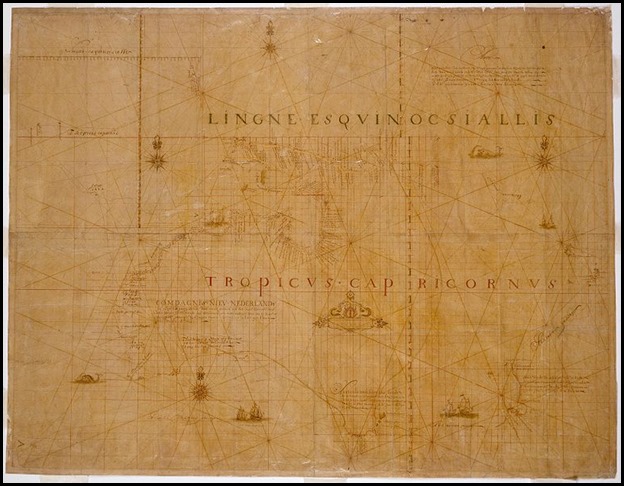 The Abel Tasman
map 1644, also known as the Bonaparte Tasman map.
In August 1642, the Council of the
Indies, consisting of Antonie van Diemen, Cornelis van der Lijn, Joan
Maetsuycker, Justus Schouten, Salomon Sweers, Cornelis Witsen, and Pieter Boreel
in Batavia despatched Abel Tasman and Franchoijs Visscher on a voyage of which
one of the objects was to obtain knowledge of "all the totally unknown provinces
of Beach".
Beach and Terra
Australis: Beach appeared on maps of the time, notably that of Abraham
Ortelius of 1570 and that of Jan Huygen van Linschoten of 1596, as the
northernmost part of the southern continent, the Terra Australis, along with
Locach. According to Marco Polo, Locach was a kingdom where gold was “so
plentiful that noone who did not see it could believe it”. Beach was in fact a
mistranscription of Locach. Locach was Marco Polo’s name for the southern Thai
kingdom of Lavo, or Lop Buri, the “city of Lavo”, (after Lavo, the son of Rama
in Hindu mythology). In Chinese (Cantonese), Lavo was pronounced “Lo-huk”, from
which Marco Polo took his rendition of the name. In the German cursive script,
“Locach” and “Beach” look similar, and in the 1532 edition of Marco Polo’s
Travels his Locach was changed to Boëach, later shortened to Beach. OK, stay
with it........They seem to have drawn on the map of the world published in
Florence in 1489 by Henricus Martellus, in which provincia boëach appears as the
southern neighbour of provincia ciamba. Book III of Marco Polo’s Il Milione
described his journey by sea from China to India by way of Champa (Southern
Vietnam), Java (which he called Java Major), Locach and Sumatra (called Java
Minor). After a chapter describing the kingdom of Champa there follows a chapter
describing Java (which he did not visit himself). The narrative then resumes,
describing the route southward from Champa toward Sumatra, but by a slip of the
pen the name “Java” was substituted for “Champa” as the point of departure,
locating Sumatra thirteen hundred miles to the south of Java instead of Champa.
Locach, located between Champa and Sumatra, was likewise misplaced far to the
south of Java, by some geographers on or near an extension of the Terra
Australis. As explained by Sir Henry Yule, the editor of an English edition of
Marco Polo’s. Phew. The thing is, it impresses us, we follow charts and
electronic jiggery-pokery. We have depth to hand, they had to throw a line with
knots on it. We know what is on the bottom, they had a sticky plumb bob, we
always think of the old films when the man shouts “sand and shale”.
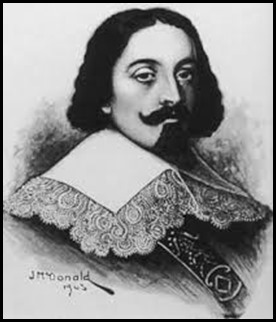 Travels: “Some
geographers of the 16th century, following the old editions which carried the
travellers south-east of Java to the land of “Boeach” (or Locac), introduced in
their maps a continent in that situation”. Gerard Mercator did just that on his
1541 globe, placing Beach provincia aurifera (“Beach the gold-bearing province”)
in the northernmost part of the Terra Australis in accordance with the faulty
text of Marco Polo’s Travels. It remained in this location on his world map of
1569, with the amplified description, quoting Marco Polo, Beach provincia
aurifera quam pauci ex alienis regionibus adeunt propter gentis inhumanitatem
(“Beach the gold-bearing province, wither few go from other countries because of
the inhumanity of its people”) with Lucach regnum shown somewhat to its south
west. Following Mercator, Abraham Ortelius also showed BEACH and LVCACH in these
locations on his world map of 1571. Likewise, Linschoten’s very popular 1596 map
of the East Indies showed BEACH projecting from the map’s southern edge, leading
(or misleading) Visscher and Tasman in their voyage of 1642 to seek Beach with
its plentiful gold in a location to the south of the Solomon Islands somewhere
between Staten Land near Cape Horn and the Cape of Good Hope. Confirmation that
land existed where the maps showed Beach to be had come from Dirk Hartog’s
landing in October 1616 on its west coast, which he called Eendrachtsland after
the name of his ship. Abel Tasman endured a very rough journey from Tasmania to
New Zealand. In one of his diary entries Tasman credits his compass, claiming it
was the only thing that kept him alive.
Mauritius: In
accordance with Visscher's directions, Tasman sailed first to Mauritius and
arrived on the 5th of September 1642. The reason for this was the crew could be
fed well on the island; there was plenty of fresh water and timber to repair the
ships. Tasman got the assistance of the governor Adriaan van der Stel. Because
of the prevailing winds Mauritius was chosen as a turning point. After a four
week stay on the island both ships left on the 8th of October. After a month's
travel, snow and hail influenced Tasman to alter course to a more northern
direction. Part of the western shore of the continent was already known to the
Dutch, but no one had gone as far as Pieter Nuyts.
Tasmania: On the
24th of November 1642 Abel Tasman sighted the west coast of Tasmania, north of
Macquarie Harbour. He named his discovery Van Diemen's Land after Antonio van
Diemen, Governor-General of the Dutch East Indies. Proceeding south he skirted
the southern end of Tasmania and turned north-east, Tasman then tried to work
his two ships into Adventure Bay on the east coast of South Bruny Island where
he was blown out to sea by a storm, this area he named Storm Bay. Two days later
Tasman anchored to the North of Cape Frederick Hendrick just North of the
Forestier Peninsula. Tasman then landed in Blackman Bay – in the larger Marion
Bay. The next day, an attempt was made to land in North Bay; however, because
the sea was too rough the carpenter swam through the surf and planted the Dutch
flag in North Bay. Tasman then claimed formal possession of the land on the 3rd
of December 1642.
New Zealand: After
some exploration, Tasman had intended to proceed in a northerly direction but as
the wind was unfavourable he steered east. On the 13th of December they sighted
land on the north-west coast of the South Island, New Zealand, becoming the
first Europeans to do so. Tasman named it Staten Landt on the assumption that it
was connected to an island (Staten Island, Argentina) at the south of the tip of
South America. Proceeding north and then east, he stopped to gather water, but
one of his boats was attacked by Māori in waka (canoes) and four of his men and
several Māori were killed. Archeological research has shown the Dutch had tried
to land at a major agricultural area, which the Māori may have been trying to
protect. Tasman named the bay Murderers' Bay (now known as Golden Bay) and
sailed north, but mistook Cook Strait for a bight (naming it Zeehaen's Bight).
Two names he gave to New Zealand landmarks still endure, Cape Maria van Diemen
and Three Kings Islands, but Kaap Pieter Boreels was renamed by Cook one hundred
and twenty five years later to Cape Egmont.
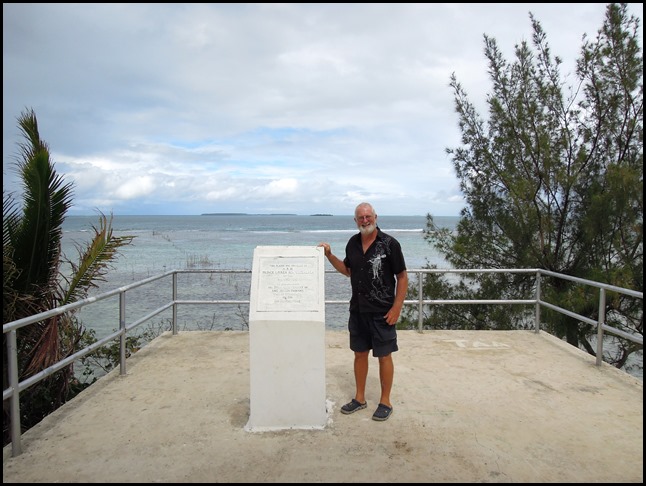
Bear poses with the plaque to Abel.
The return voyage:
On route back to Batavia, Tasman came across the Tongan archipelago on the 20th
of January 1643. While passing the Fiji Islands Tasman's ships came close to
being wrecked on the dangerous reefs of the north-eastern part of the Fiji
group. He charted the eastern tip of Vanua Levu and Cikobia before making his
way back into the open sea. He eventually turned north-west to New Guinea, and
arrived at Batavia on the 15th of June 1643.
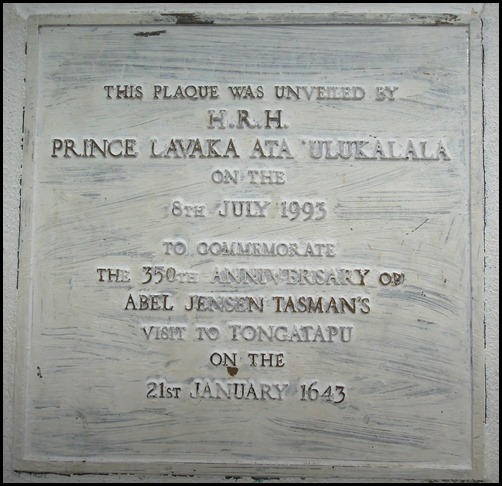 Someone thought it was a good idea to
give this a lick of paint ???
 Abel didn’t choose the easiest place to come ashore, the
reef stretches out a long way.
Second Pacific
voyage: With three ships on his second voyage (Limmen, Zeemeeuw and the
tender Braek) in 1644, he followed the south coast of New Guinea eastwards. He
missed the Torres Strait between New Guinea and Australia, and continued his
voyage along the Australian coast. He mapped the north coast of Australia making
observations on the land, called New Holland, and its people.
From the point of view of the Dutch
East India Company Tasman's explorations were a disappointment: he had neither
found a promising area for trade nor a useful new shipping route. Although
received modestly, the company was upset to a degree that Tasman didn't fully
explore the lands he found, and decided that a more "persistent explorer" should
be chosen for any future expeditions. For over a century, until the era of James
Cook, Tasmania and New Zealand were not visited by Europeans – mainland
Australia was visited, but usually only by accident.
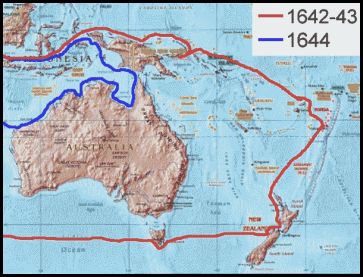 The route
of the first and second voyage
Later life: On the
2nd of November 1644 Abel Tasman was appointed a member of the Council of
Justice at Batavia. He went to Sumatra in 1646, and in August 1647 to Siam (now
Thailand) with letters from the company to the King. In May 1648 he was in
charge of an expedition sent to Manila to try to intercept and loot the Spanish
silver ships coming from America, but he had no success and returned to Batavia
in January 1649. In November 1649 he was charged and found guilty of having in
the previous year hanged one of his men without trial, was suspended from his
office of commander, fined, and made to pay compensation to the relatives of the
sailor. On the 5th of January 1651 he was formally reinstated in his rank and
spent his remaining years at Batavia. He was in good circumstances, being one of
the larger landowners in the town. He died at Batavia in October 1659 and was
survived by his second wife and a daughter by his first wife. The poor in
Lutjegast received the small amount of only 25 guilders.
 Legacy:
Multiple places have been named after
Tasman, including:
the Australian island Tasmania,
renamed after him, formerly Van Diemen's land. It includes features such as:
the Tasman Peninsula, the Tasman Bridge, the Tasman Highway
and the Tasman Sea
in New Zealand: the Tasman Glacier, Tasman Lake,
the Tasman River, Mount Tasman, the Abel Tasman National
Park, Tasman Bay and the Tasman District
Also named after Tasman are:
Abel Tasman Drive and the Abel Tasman Memorial in Takaka.
The former passenger/vehicle ferry
Abel Tasman
The Able Tasmans – an indie band from
Auckland, New Zealand.
Tasman, a layout engine for Internet
Explorer
6594 Tasman (1987 MM1), a main-belt
asteroid
Tasman Drive in San Jose, California
and its Tasman light rail station
His portrait has been on four New
Zealand postage stamp issues, on a 1992 five New Zealand dollar coin, and on one
1985 Australian postage stamp
Tasman Map: The original Tasman Map
is held in the collection of the State Library of New South Wales. The map shows
a general outline of some parts of the coastline of Australia. The map is also
reproduced in the marble floor of the Mitchell Library entry foyer.
 ALL IN ALL A
BUSY CHAP
A CONVOLUTED
BUSINESS |